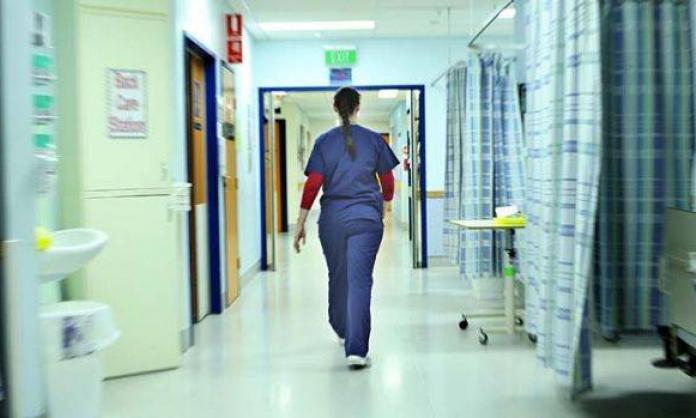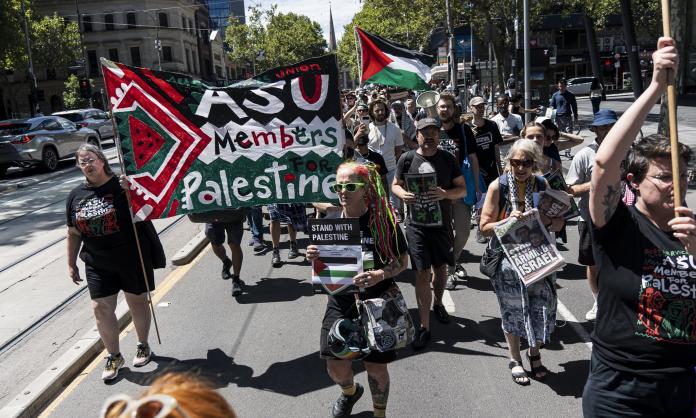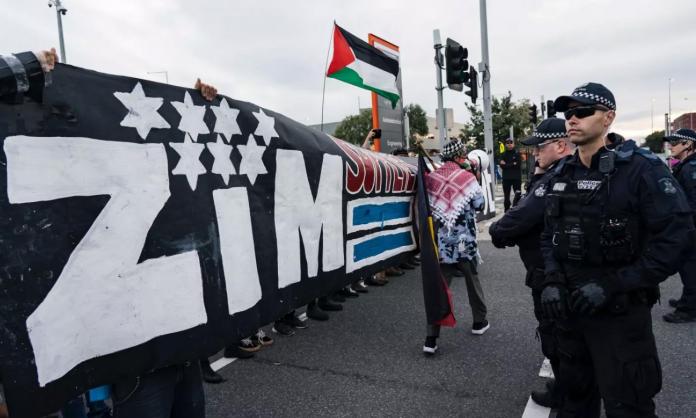Nurses and midwives in New South Wales have rejected the state government’s insulting offer of a 3 percent pay rise in a combative, all-membership meeting at Sydney’s Town Hall.
The union leaders proposed a motion at the meeting that committed to continuing the industrial action campaign for safe nurse-to-patient ratios, but capitulated to the state government on the question of pay. The union’s original pay claim was for 4.75 percent. At the union meeting, officials argued to accept the Liberal state government’s 3 percent offer. This is well below the 5.1 percent inflation rate which is projected to continue to rise. The offer is a pay cut and comes off the back of years of public sector wage freezes.
Socialist nurses Nathanial Mitchell and Declan Maher moved an amendment to the motion to reject the 3 percent pay offer, and to instead fight for an above-inflation pay rise of at least 7 percent. They argued, along with other supporters, that the 3 percent offer is totally inadequate for nurses and midwives who have carried the burden of the pandemic and are facing significant cost of living pressures.
The amendment was heavily contested. Some, including the New South Wales Nurses and Midwives’ Association (NSWNMA) General Secretary Brett Holmes, argued that to reject the 3 percent offer risks the government coming back with an offer of 0. But nurses have rejected paltry pay offers before—we rejected the 1.04 percent offer in 2012, and the government was forced back to the bargaining table.
When put to a vote, the amendment won 522 to 513 votes, despite the vocal opposition of many of the union’s leaders.
The meeting took place on the third day of state-wide strike action organised by the NSWNMA this year. Members from 80 hospitals voted to strike for varying amounts of time to attend the meeting. Along with the debate and vote on raising the pay claim, many nurses voiced their support for other unions who have recently been on strike and argued for joint action with other public sector unions.
The NSWNMA, as the largest union in the state, should set the standard for the current wave of public sector strikes. The inflation shock has only exacerbated trends that have been in play for the last couple of decades—that the bosses get a larger share of the profit, while workers receive less and union activism declines.
If the state government could have its way, the cost of the crisis would come directly from the pockets of the same nurses, midwives, teachers, public transport workers and all other public sector workers who kept the state running during months of lockdowns. Only a combative and determined trade union movement can reverse this trend, and it won’t do it by lowballing on pay.
This victory sets an important precedent for unions across NSW, and across Australia. The union movement needs to be more ambitious, more militant and more disruptive. The victory of the 7 percent pay rise vote proves that there is an appetite for this. If one union wins a real pay rise, it can give confidence to workers in other industries to demand more. If we combine our efforts and strike together, we can effectively shut the state down and force the government to meet our demands.
Despite arguing against raising the pay claim, at a press conference after the members meeting Holmes told the media: “Nurses today have clearly said that 3 percent is inadequate and they think that next year’s offer of 3.5 and expecting them to come up with more productivity, to get more blood sweat and tears out of nurses and midwives is a joke and a farce”.
It is now up to union activists to return to their local branches and push for further state-wide action to bust the NSW Government’s pay cap and win a real pay rise, along with nurse-to-patient ratios.










